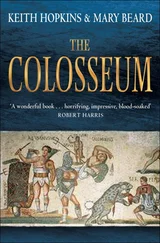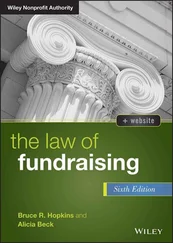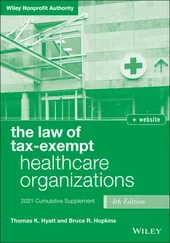Bruce R. Hopkins - The Tax Law of Charitable Giving
Здесь есть возможность читать онлайн «Bruce R. Hopkins - The Tax Law of Charitable Giving» — ознакомительный отрывок электронной книги совершенно бесплатно, а после прочтения отрывка купить полную версию. В некоторых случаях можно слушать аудио, скачать через торрент в формате fb2 и присутствует краткое содержание. Жанр: unrecognised, на английском языке. Описание произведения, (предисловие) а так же отзывы посетителей доступны на портале библиотеки ЛибКат.
- Название:The Tax Law of Charitable Giving
- Автор:
- Жанр:
- Год:неизвестен
- ISBN:нет данных
- Рейтинг книги:5 / 5. Голосов: 1
-
Избранное:Добавить в избранное
- Отзывы:
-
Ваша оценка:
- 100
- 1
- 2
- 3
- 4
- 5
The Tax Law of Charitable Giving: краткое содержание, описание и аннотация
Предлагаем к чтению аннотацию, описание, краткое содержание или предисловие (зависит от того, что написал сам автор книги «The Tax Law of Charitable Giving»). Если вы не нашли необходимую информацию о книге — напишите в комментариях, мы постараемся отыскать её.
The Tax Law of Charitable Giving — читать онлайн ознакомительный отрывок
Ниже представлен текст книги, разбитый по страницам. Система сохранения места последней прочитанной страницы, позволяет с удобством читать онлайн бесплатно книгу «The Tax Law of Charitable Giving», без необходимости каждый раз заново искать на чём Вы остановились. Поставьте закладку, и сможете в любой момент перейти на страницу, на которой закончили чтение.
Интервал:
Закладка:
The practice of attending to community needs outside of government has profoundly shaped American society and its institutional framework. While in most other countries, major social institutions such as universities, hospitals, schools, libraries, museums and social welfare agencies are state-run and state-funded, in the United States many of the same organizations are privately controlled and voluntarily supported. The institutional landscape of America is, in fact, teeming with nongovernmental, noncommercial organizations, all the way from some of the world's leading educational and cultural institutions to local garden clubs, from politically powerful national associations to block associations—literally millions of groups in all. This vast and varied array is, and has long been widely recognized as, part of the very fabric of American life. It reflects a national belief in the philosophy of pluralism and in the profound importance to society of individual initiative.
Underpinning the virtual omnipresence of voluntary organizations, and a form of individual initiative in its own right, is the practice—in the case of many Americans, the deeply ingrained habit—of philanthropy, of private giving, which provides the resource base for voluntary organizations.
These two interrelated elements, then, are sizable forces in American society, far larger than in any other country. And they have contributed immeasurably to this country's social and scientific progress. On the ledger of recent contributions are such diverse advances as the creation of noncommercial “public” television, the development of environmental, consumerist and demographic consciousness, community-oriented museum programs, the protecting of land and landmarks from the often heedless rush of “progress.” The list is endless and still growing; both the number and deeds of voluntary organizations are increasing. “Americans are forever forming associations,” wrote de Tocqueville. They still are: tens of thousands of environmental organizations have sprung up in the last few years alone. Private giving is growing, too, at least in current dollar amounts. 40
Here, the concept of philanthropy enters, with the view that charitable organizations, maintained by tax exemption and nurtured by an ongoing flow of deductible contributions, reflect the American philosophy that not all policy making and problem solving should be reposed in the governmental sector. Earlier, a jurist wrote, in a frequently cited article, that philanthropy
is the very possibility of doing something different than government can do, of creating an institution free to make choices government cannot—even seemingly arbitrary ones—without having to provide a justification that will be examined in a court of law, which stimulates much private giving and interest. 41
A component part of the public policy doctrine is its emphasis on voluntarism . This principle was expressed as follows:
Voluntarism has been responsible for the creation and maintenance of churches, schools, colleges, universities, laboratories, hospitals, libraries, museums, and the performing arts; voluntarism has given rise to the public and private health and welfare systems and many other functions and services that are now an integral part of the American civilization. In no other country has private philanthropy become so vital a part of the national culture or so effective an instrument in prodding government to closer attention to social needs. 42
One of the modern-day advocates of the role and value of the independent sector in the United States was John W. Gardner, former Secretary of Health, Education, and Welfare, founder of Common Cause, and one of the founders of Independent Sector. Mr. Gardner wrote extensively on the subject of the necessity for and significance of the nation's nonprofit sector. He stated that the “area of our national life encompassed by the deduction for religious, scientific, educational, and charitable organizations lies at the very heart of our intellectual and spiritual striving as a people, at the very heart of our feeling about one another and about our joint life.” 43 He added that the “private pursuit of public purpose is an honored tradition in American life” 44 and believed that “[a]ll elements in the private sector should unite to maintain a tax policy that preserves our pluralism.” 45 Likewise, Robert J. Henle, formerly president of Georgetown University, wrote of how the “not-for-profit, private sector promotes the free initiative of citizens and gives them an opportunity on a nonpolitical basis to join together to promote the welfare of their fellow citizens or the public purpose to which they are attracted.” 46
It is not possible, in a book of this nature, to fully capture the philosophical underpinnings of the nonprofit sector. This task has been accomplished, however, by Brian O'Connell while president of Independent Sector. 47 In a foreword to Mr. O'Connell's work, John W. Gardner stated this basic truth: “All Americans interact with voluntary or nonprofit agencies and activities regularly, although they are often unaware of this fact.” 48 Still, the educational process must continue, for, as Mr. Gardner wrote, “The sector enhances our creativity, enlivens our communities, nurtures individual responsibility, stirs life at the grassroots, and reminds us that we were born free.” 49 Mr. O'Connell's collection includes thoughts from sources as diverse as Max Lerner (“the associative impulse is strong in American life; no other civilization can show as many secret fraternal orders, businessmen's ‘service clubs,’ trade and occupational associations, social clubs, garden clubs, women's clubs, church clubs, theater groups, political and reform associations, veterans' groups, ethnic societies, and other clusterings of trivial or substantial importance” 50 ); Daniel J. Boorstin (“in America, even in modern times, communities existed before governments were there to care for public needs” 51 ); Merle Curti (“voluntary association with others in common causes has been thought to be strikingly characteristic of American life” 52 ); John W. Gardner (“For many countries . . . monolithic central support of all educational, scientific, and charitable activities would be regarded as normal . . . [b]ut for the United States it would mean the end of a great tradition” 53 ); Richard C. Cornuelle (“We have been unique because another sector, clearly distinct from the other two, has, in the past, borne a heavy load of public responsibility” 54 ); John D. Rockefeller III (“The third sector is . . . the seedbed for organized efforts to deal with social problems” 55 ); Waldemar A. Neilsen (“the ultimate contribution of the Third Sector to our national life—namely what it does to ensure the continuing responsiveness, creativity and self-renewal of our democratic society” 56 ); Richard W. Lyman (“an array of its [the independent sector's] virtues that is by now fairly familiar: its contributions to pluralism and diversity, its tendency to enable individuals to participate in civic life in ways that make sense to them and help to combat that corrosive feeling of powerlessness that is among the dread social diseases of our era, its encouragement of innovation and its capacity to act as a check on the inadequacies of government” 57 ); and himself (“The problems of contemporary society are more complex, the solutions more involved and the satisfactions more obscure, but the basic ingredients are still the caring and the resolve to make things better”). 58
Consequently, it is erroneous to regard the charitable contribution deduction and tax exemption as anything other than a reflection of this larger doctrine. Congress is not merely “giving” eligible nonprofit organizations any “benefits”; the charitable deduction or exemption from taxation is not a “loophole,” a “preference,” or a “subsidy”—it is not really an “indirect appropriation.” 59 Rather, the various Internal Revenue Code provisions that establish the tax exemption system exist as a reflection of the affirmative policy of American government to refrain from inhibiting by taxation the beneficial activities of qualified tax-exempt organizations acting in community and other public interests. 60
Читать дальшеИнтервал:
Закладка:
Похожие книги на «The Tax Law of Charitable Giving»
Представляем Вашему вниманию похожие книги на «The Tax Law of Charitable Giving» списком для выбора. Мы отобрали схожую по названию и смыслу литературу в надежде предоставить читателям больше вариантов отыскать новые, интересные, ещё непрочитанные произведения.
Обсуждение, отзывы о книге «The Tax Law of Charitable Giving» и просто собственные мнения читателей. Оставьте ваши комментарии, напишите, что Вы думаете о произведении, его смысле или главных героях. Укажите что конкретно понравилось, а что нет, и почему Вы так считаете.












